H O T I D E A S F O R S M A L L R A I L R O A D S
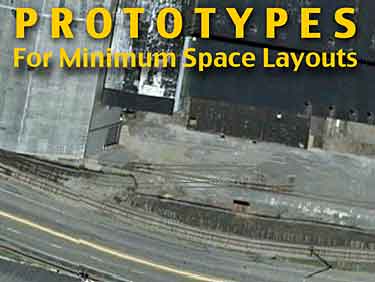 Here’s a collection of real-life railroads especially suited for small layout models! From around the world we’ve gathered a rousing assortment of rail sites that are inspiring or unusual or both. Take a look… and maybe have a go!
Here’s a collection of real-life railroads especially suited for small layout models! From around the world we’ve gathered a rousing assortment of rail sites that are inspiring or unusual or both. Take a look… and maybe have a go!
In This Issue
New Jersey USA—Picturesque rural switching line
Brazil—A roadside attraction in steam
Colorado USA—An oval museum railroad
Switzerland—Alpine rack railroad with unique features
Minnesota USA—Riverside shunting in St. Paul
Portugal—Useful junction station near Lisbon
Indiana USA—A mile-long short line to model
Australia—Single-line terminal near Sydney
Pennsylvania USA—Industrial island near Pittsburgh
England—Another way to leave your layout
Netherlands & USA—Rooftop tramways make a clean sweep
RURAL NEW JERSEY: AN APPEALING LITTLE SWITCHING AREA
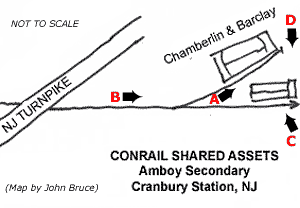
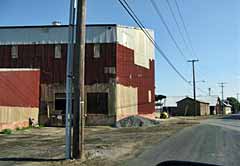
John Bruce, from Los Angeles USA, took photos and provided information about a delightful rural switching (shunting) area in rural New Jersey. It’s Cranbury Station, New Jersey USA, on the original 1831 Camden and Amboy line, now the ex-PRR Amboy Secondary of Conrail Shared Assets. This area is the northeastern end of that line, which was cut by highway construction in the early 1980s.
John comments, “At that point, there were two active spurs, one on either side of the New Jersey Turnpike. The westernmost led to a Jamesway warehouse—Jamesway was something like WalMart, but it went out of business in the early 1990s, and rail service ended at that time.” The spur is still in place (lower left), disappearing into the woods and providing a neat modeling possibility (see John’s comment below).
John continued, “There was an earlier spur that crossed the location of the Jamesway spur in the opposite direction, to a company called Unexcelled Chemical. This service seems to have ended in the 1950s. Unexcelled had something to do with explosives, and periodic booms provided about the only excitement to the nearby hamlet of Cranbury at this time. The spur on the other side of the Turnpike goes to Chamberlin and Barclay, a supplier of farm and garden supplies, which still receives fertilizer in covered hoppers and is probably the only customer left on the whole secondary.
“There are many good points on this prototype that lend themselves to micro modeling. You could do a very basic ‘fishhook’ style micro with just the current spur to Chamberlin and Barclay (upper and lower right), modeling that particular scene (it’s interesting enough that amateur painters were at work on their canvases in my last visit). No runaround is on the prototype; the three-times weekly local pulls a car out from Conrail Shared Assets’s South River yard, exchanges it for the empty in the siding, and shoves the car back.
“You could also do a ‘fishhook’ layout using the Jamesway spur as a pattern. This is pretty well buried in trees, and you wouldn’t need to model the warehouse itself. It could be an ‘invisible industry,’ offstage in the woods. The visible part of the layout would include the Turnpike bridge portal [a natural lead-in to the fiddle track], the switch, and the spur leading into the trees.”
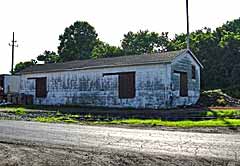
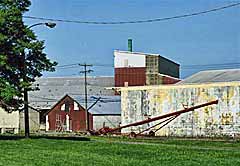
BRAZIL: A ROADSIDE ATTRACTION — UNDER STEAM
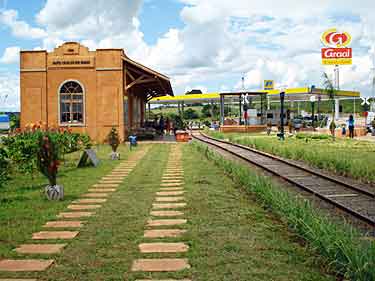
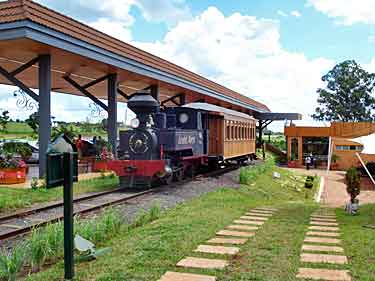
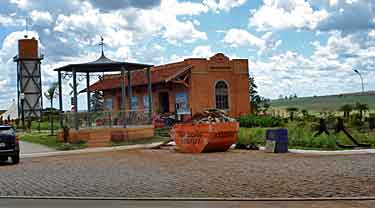
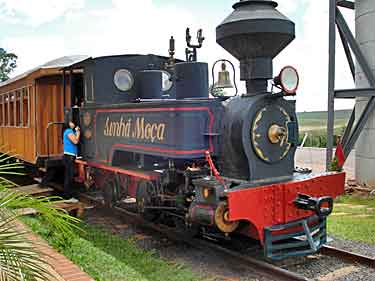
Wilson Lussari sent along some photographs, taken during January 2009, of an attractive local tourist rest and fueling stop in Santa Cruz do Rio Pardo, São Paulo state, Brazil. Besides fueling your auto and yourself, you can visit a small museum showing the region and its coffee plantations—and you can ride a meter-gauge railroad behind a 0-4-2T steam locomotive. All of this can be modelled exactly to HO scale on a four-foot (120cm) bookshelf!
“Named Estação Kafé (Coffee Station),” explains Wilson, “this is a most interesting road stop with railroading and coffee as themes. The small steam 0-4-2ST (restored from an old sugar cane plantation line) and passenger car (I think scratch built 1:1) ride on about 100 meters of track. The station and freight shed houses a museum about the city and the coffee cycle in the region.”
The restaurant, museum and fuel pumps were developed by a rest stop chain, Rede Graal. The railroad is maintained and operated by the Associação Barão de Mauá, a regional railway preservation and modeling group. The drawing (below) shows how an exact scale, foot-by-foot HOm (12mm gauge) model of the little road will fit on a 48x8in (120x20cm) shelf. Trains shuttle between the restaurant and the museum, an effect that an electronic shuttle circuit can reproduce in miniature with exact prototypical fidelity!

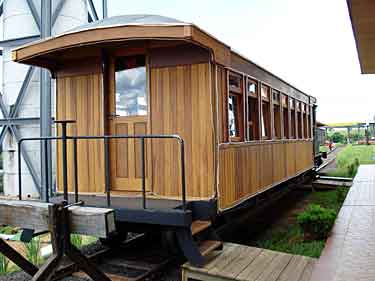
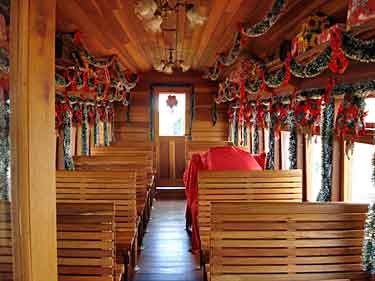
COLORADO: MUSEUM PRESENTS A FULL-SIZED ‘LINN WESTCOTT PLAN’
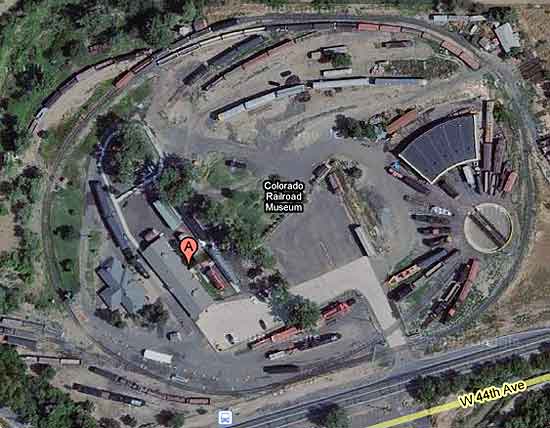
Recently, in the Small Layout Design discussion group on Yahoo!, Loren J posted a link to an aerial view of the Colorado Railroad Museum in Golden, Colorado USA (at left is the Google Maps view). Loren’s comment was, “This ‘railroad’ could be modeled 1:1.” Indeed, one group member commented, “Wow, a prototype that actually looks like a Linn Westcott plan!”
The three-foot gauge (91cm) oval track is 1/3 mile (.5km) around, holding over 100 historic locomotives and cars. The museum also houses the Denver HO Model RR Club’s Denver and Western layout. The Denver Garden Railway Society also has a G-scale garden railway on the grounds.
SWITZERLAND: THE RACK LINE RIGI BAHN USES SMALL-LAYOUT TRICKS
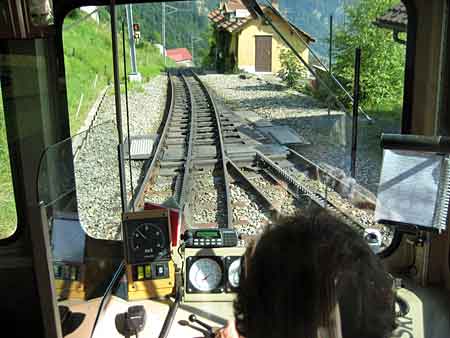
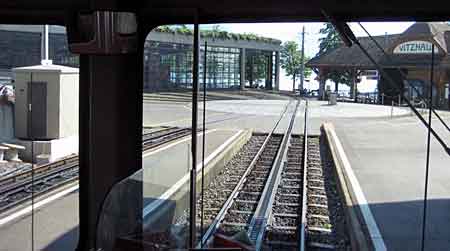
The Vitznau-Rigi Bahn is a standard gauge rack railway that runs for 5 kilometers from the shores of beautiful Lake Lucerne to near the top of Mount Rigi. Grades are as steep as 1 in 4 (25%), and the railroad has been in use since its opening in 1871. Bart Bakker, from Utrecht in the Netherlands, rode the line last year, and sent photos of a couple unusual features that look like tricks we might use in micro layout design!
There’s just one long passing siding (double track) on the line, and an unusual sector plate is used to merge the lines back into single track at Freibergen. Rather than using a conventional track switch, the lines’ engineers designed a whole track section to swing over to complete the through line (top right photo)! Bart comments, “QED: a sector plate made of flextrack on a micro-layout is prototypical!”
The line terminates at Vitznau, where lakeshore property is so scarce that a special turntable was designed to save space and handle the trains. The platform tracks duck under a roadway (right) to reach the turntable. Trains can move straight across to the train shed for storage, or they can use the curved leg of the turntable to go directly to a different storage track (lower left). Bart points out that also “a small locomotor rides on the turntable and pulls and pushes rolling stock into/from shed tracks.” (lower right).
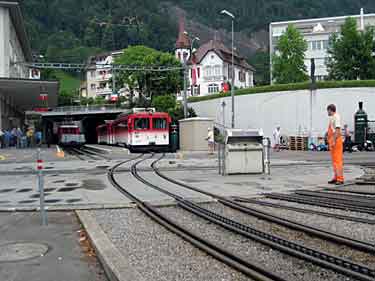
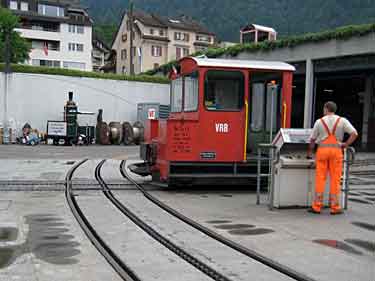
MINNESOTA: IN THE ‘PIGS EYE’ INDUSTRIAL DISTRICT OF ST. PAUL
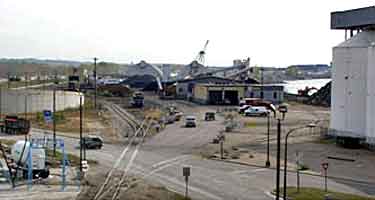
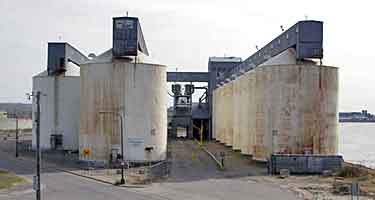
A couple years ago Ian Holmes, who lives in Princeton, Minnesota USA, wandered down into the Pigs Eye district of St. Paul, the second largest city in the state. There on the shores of the Mississippi River is a large railroad yard and an extensive industrial area with a wealth of modeling posssibilities. Here’s one possibility that Ian discovered, in his own words:
“First, look at the [above-left] photo. In the middle distance you should be able to make out a loop (passing siding) with a small diesel loco standing. Behind the road overbridge at the left you should make out the colours of some wagons (railroad cars) in part of Pigs Eye Yard. The switching line disappears off into the distance from the loop, past the fuel depots and other warehouses.
“The way I see it, a main road diesel would bring a selection of cars into the loop, appearing on that track directly in front of us. The road engine drops the cars off, and a smaller unit would pick them up to finish the job. Front left you have a cement terminal. Over to the right you have Harvest States grain.
“The other shot (right) shows an end-on view of the grain depot. The track runs all the way through between the silos. (Now here is what I would do for the first micro layout, based on just this section.) The diesel would bring a grain car into the yard by the elevators, then leave it. Then a really tiny unit (perhaps a Trackmobile) appears from between the silos and pulls the hopper through as if it is unloading. The diesel switcher picks up the empties on its next visit.” Spectacular railroading in a cramped space!
PORTUGAL: SUBURBAN STATION MAKES GOOD JUNCTION PROTOTYPE
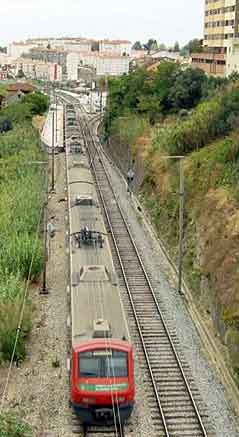
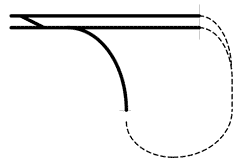
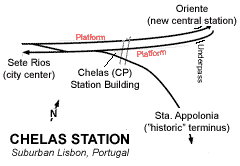
Henning Stelter, a contributor to these pages, recently moved from Germany to Lisbon, Portugal. He has kept his eyes open, looking for rallroading possibilities. Here’s an early report on one station he found—Chelas Station in suburban Lisbon.
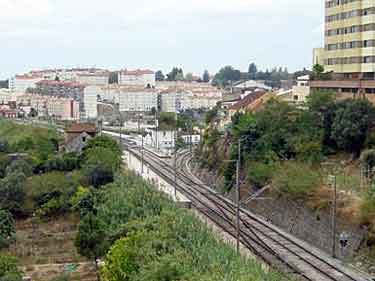
“Every day I pass the Chelas (CP) station (CP stands for Caminhos de Ferro Portugueses, the Portuguese state railway). This tiny station is located on a busy stretch. Most trains—mainly local and express passenger trains—rush on through, but some local passenger trains stop at the station. In my view the setting calls for being modelled, maybe to justify a reverse loop (see sketch). In a limited space there is a grade crossing, underpass and urban canyons with the river Tagus and Arrabida mountains looming in the distance.”
INDIANA: MODEL A ONE-MILE SHORT LINE TO A MARSHMALLOW FACTORY

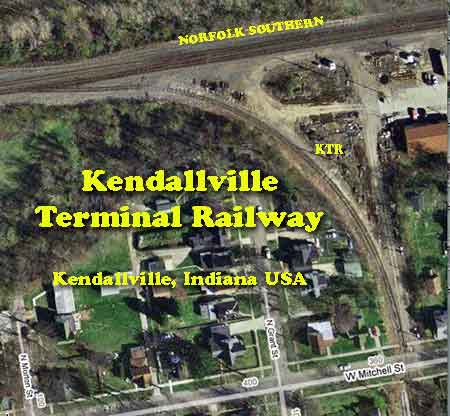
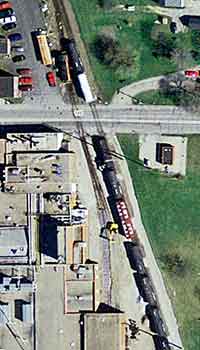
Ever wondered where marshmallows come from? A whole lot of them originate at Kraft Foods in Kendallville, Indiana USA. They are brought to the world’s markets by a 1.1 mile short line, the Kendallville Terminal Railway Co. Brian Schmidt brought the KTR to our attention in Issue No. 80 of Model Trains International. He included a small sketch map of the line.
Here are three aerial photos from Google Maps, showing every track switch on the railroad—from the interchange with the Norfolk Southern (above left), to the Rush St. storage and runaround trackage (at right), ending at the Kraft Foods factory (left). The factory receives cars of corn syrup and sugar every day, and ships marshmallows on a continuing basis.


I couldn’t resist sketching out a couple of micro layout possibilities based on the Marshmallow Short Line. At right is a 5x1ft (150x30cm) HO version of the Rush St. trackage. A cassette (or transfer table) takes the place of the passing siding (loop) entry switch, completing the runaround in the fiddle yard. A second freight customer receives cars at the gray platform (front and center) on the near leg of the passing siding, creating an interesting problem for runaround maneuvers. The left-hand layout holds the Kraft Foods marshmallow works, its trackage echoing the prototype. Note that it also becomes a 3-2-2 car Inglenook switching game, completely realistically. It’s 4x1ft (120x30cm). Obviously the two layouts can be joined to duplicate the complete short line traffic. —Carl Arendt
AUSTRALIA: HOW ABOUT A BUSY SINGLE-LINE TERMINAL?
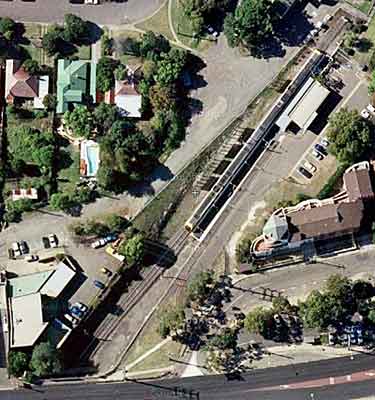
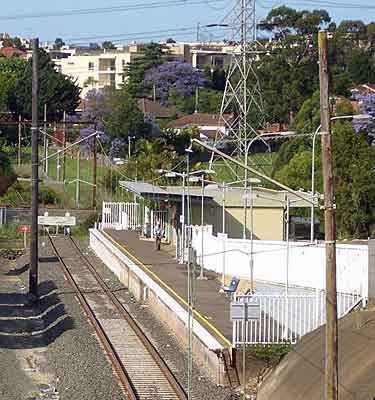


Martin “Mad Marty” Hartley, from Sydney, Australia, compressed both the prototype and his own scale/gauge choices to produce this very small version of Carlingford station on the CityRail suburban network in Sydney. Says Martin, “The real Carlingford station has a platform long enough for a 4-car electric set (see Google aerial photo). I have drawn this plan to use T-gauge electric set cars from Japan, which when painted Indian Red with dark Grey roofs and the optional pantographs added will look just like the single-deck ‘Red Rattlers’ which trod the rails of Sydney from the 1920s until the early 1990s. When you buy a T-gauge set you get four cars. Split these up into two car sets, and now you’ve got one set to operate and a spare set too!.
“On the platform would be a basic station building, which will probably have to be scratch-built to a scale of 1:450. It can be detailed with 1:450 and 1:500 scale model cars, bicycles, people and trees available from architectural modelling suppliers and from the Japanese T gauge set manufacturer. There are also single-track Catenary poles available—one packet will be more than enough for this layout… The backscene would contain a row of shops and units as found in the area. Further public domain pictures of the prototype can be found here.
“At 300x30mm (12×1¼in) this is the smallest layout I have designed in the smallest scale I have designed with to date! Normally I work in O scale where the size is something I can see!” [Note that the Carlingford Station setting is perfect for modelling—a single-line terminus (SLT) that almost immediately dives into a tunnel beneath a road (setting up a fiddle yard location). For a similar track plan in a much larger scale, see Stourbridge Town, by Chris Gilbert.]
PENNSYLVANIA: NEVILLE ISLAND IN PITTSBURGH—PARADISE FOR SHUNTING
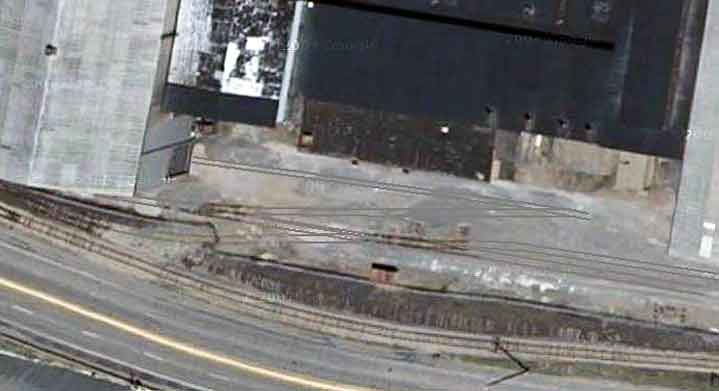
Here’s a larger and clearer view (somewhat enhanced) of the Google aerial shot that decorates the topic title at the top of this page. It’s a small scene on Pittsburgh’s Neville Island, a five-mile-long piece of narrow land in the middle of the Ohio River just downstream from the center of town. The late Pittsburgh Industrial Railroad (now operating as the Pittsburgh and Ohio Central RR) had extensive switching trackage in the heavy industrial eastern end of the island. The western end holds a posh residential settlement.
This particular industry, in the 4600 block of Neville Road, appealed to me because it has a knot of switching trackage completely enclosed within a factory yard (see lower photo). The factory spur comes from the P&OC “main line” at the lower left, entering the yard through a gate in the mesh fence that fronts the entire space (very handy in the model for fending off small fingers!). The rest of the buildings are ideal as low-relief models with varying textures and shapes, fencing in the other three sides of the layout. A fiddle siding or cassette could be connected at the lower left.

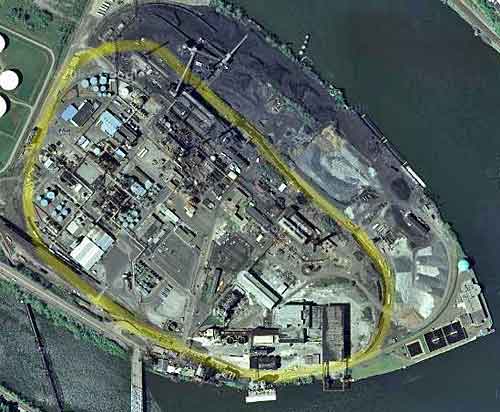
A brief postscript: while Googling around Neville Island, I discovered quite by chance that there’s an operating oval track at the extreme eastern end of the island. You can see it traced out on the Google Map at left. Running from it are a diversity of spurs to various industrial activities in the area. If you’d like to trace it out in more detail, the aerial view is found here. —Carl Arendt
ENGLAND: YET ANOTHER WAY TO LEAVE YOUR LAYOUT
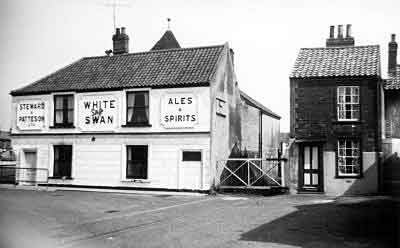
Englishman Norman Woollons, currently resident in Abu Dhabi, UAE, responded to our call for “creative ways to leave your layout” (i.e., head into the fiddle yard) unobtrusively by sending us this antique photograph. Norman wrote, “I attach a photograph of a real exit that was part of the Great Yarmouth Union Railway in England. For those who don’t know, Great Yarmouth is on the semi-circular bulge that sticks out into the North Sea, on the east coast of England. I came across the photo some years ago and kept it as one of those things that you really should model sometime.”
This one is especially nice for pub collectors!
USA & NETHERLANDS: LOOK! UP IN THE SKY! IT’S A… TRAMWAY?!
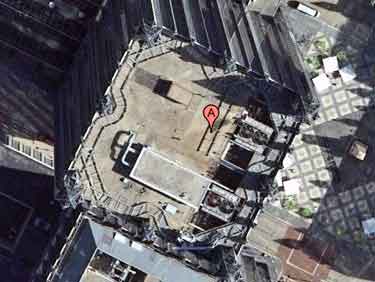
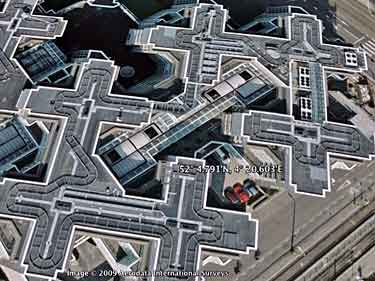
To end this collection of unusual prototypes on a high note, so to speak, we come to a discovery made by long-time contributor Vincent Wesstein, from the Netherlands. Vincent, a fan of the Google Earth application, suddenly realized one day that we were overlooking a fascinating prototype: skyscrapers! Here’s his explanation.
“High rise buildings, and especially their windows, need cleaning on a regular (and for large buildings, constant) basis. To do this, they suspend some daredevils in a bucket on a rope from the roof, only held by some sort of crane to prevent gravity taking over. Sometimes buildings are compact enough to have a single, extendable crane on the roof to reach all their windows. But more often, these cranes need to move.
“For safety reasons, they’re attached firmly to some track that runs around the parameter of the building, not unlike rollercoasters on their thrilling tracks. Some complex buildings require complex trackwork, which includes turnouts. Here’s where the model railroading scene comes in: especially in larger scales, building a functional model of such a crane is feasible. Presentation can be as simple as a large scale model of (the top of) a skyscraper, with the layout on top and a bucket suspended on a rope.”
Vincent enclosed Google Earth coordinates for several large buildings with track layouts on their roofs. Two of them were PPG Place, a Philip Johnson design in Pittsburgh USA (left) and the Dutch Ministry of Social Affairs (right), in the Hague a few blocks from Vincent’s home. Though the corners are pretty tight, these little systems certainly look like tramways or light railways!
Vincent summed up as follows. “Adventurous modelers could even design their own skyscrapers, add some track and turnouts, roll the dice and play some Inglenook or Timesaver games! I think ‘Toplevel Modeling’ makes a good title for this idea.”

Recently, flying to Minneapolis, I saw what looked like a classic table-top model railroad layout. A loop of track with some sidings and a small yard in the center of the loop. Searching Google Maps, I found that it was the Shell Rock, Iowa operation of Trinity Rail Maintenance Services. Still under construction, and you have to look really closely to see that it isn’t set up for round-and-round continuous running (just add one crossover to do that). The place is on a plot of land about 3/4 of a mile by 1/2 mile.
Here’s the Google Maps link:
— https://goo.gl/maps/hzDrmCQcPWva54tG9